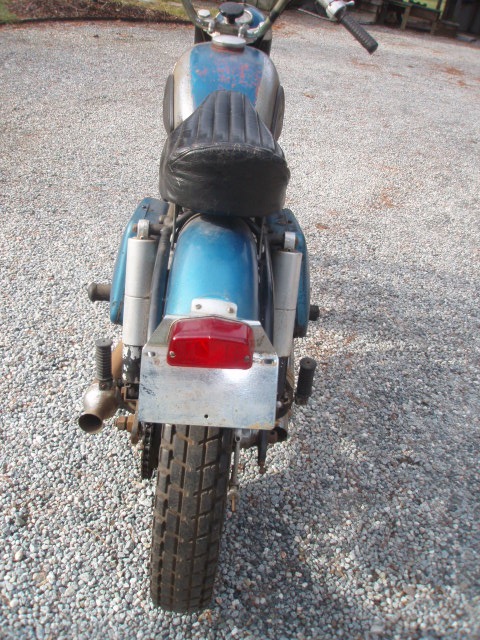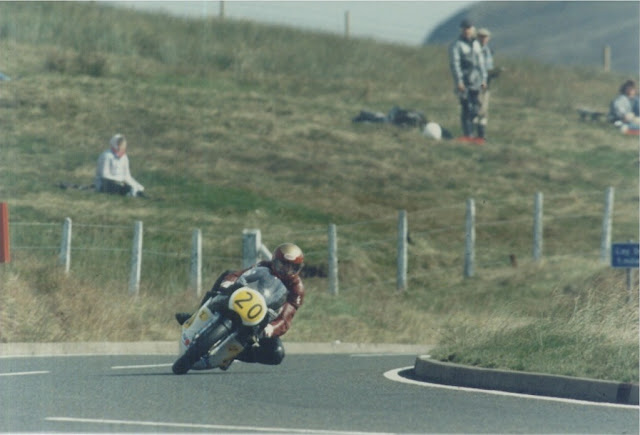I saw the bike, a 1959 Horex Resident 350, on ebay. There was about one day to go and it was up by my brother in Cromwell, Ct. Probably what most attracted me was that it was so obscure. It was far from original, but didn't look too bad. I slept on it. But, the next morning I couldn't shake it. I called the one person in the world least likely to talk me out of it and asked him to talk me out of it. He didn't. In fact, he suggested I call our friend Henry Syphers, who also lives in the area, and ask him to check it out. I caught Henry on the road and he was able to run over to the seller and found him home. They schmoozed for about half and hour while Henry was checking out the bike. The seller clears out estates and this bike was left behind by someone who died. It had sat for years. Henry called me back and said it didn't look bad and was a reasonable candidate for resuscitation and he had an idea of what the seller would let it go for. He suggested that he go back with cash and see if he could get the seller to end the auction early and take the bike away. I told Henry to go ahead. A couple of hours later he called back saying it worked and he had the bike in the back of his van. I was elated that I've acquired the ultra rare holy grail of motorcycles. I told Henry that I'll pick it up in a week or so when I go up to my brother's for Xmas.
Over the next week, some doubts crept in as I told friends about it. Reactions ranged from 'what the hell were you thinking?' to 'that's the coolest thing in the known universe', but more of the former than the latter. I did some research on the internet and found that Horex was established in the early '20s, struggled through the depression and hyper-inflation but survived with several models, made weapons during the war, and were among the first to resume making motorcycles after the war and were quite successful in the early/mid '50s, the largest manufacturer of 350s in Germany. But, by the late '50s, people were affluent enough to VW's and NSU Prinzes and the German motorcycle industry imploded. In 1960, Damlier bought Horex and shut down bike production. The Resident came out in 1955 to replace the Regina. The plunger rear suspension and telescopic forks of the Regina were replaced by a swingarm rear and Earles front suspension. The motor was changed a good deal, too, becoming fully unit construction and oversquare bore.
Friday, I picked up the bike from Henry and start to feel 'buyer's remorse' when I saw all the details I couldn't see in the photos and hadn't thought to ask Henry.
 |
| the '59 Horex Resident 350 as I received it. |
 |
| rear tire is a 4.00 X 18 Goodyear Grasshopper |
 |
| a section of EMT conduit in the exhaust pipe |
But, Sat. I dove into it. I took off the seat and tank to get at the carb and cables.
 |
| note that the left muffler is different than the right and neither are original |
Sun., I washed out the fuel tank and, while waiting for it to dry, I checked the points. They seemed tight, but after I filed them and knocked the crud off them, the gap was right on at 0.014". I had to install lugs and a grommet on the wires in the battery box. After I hooked up a 6 volt battery, I had spark when I kicked it through and the headlight worked. So, I installed the fuel tank, fuel taps and lines and put some gas in it. But, when I held the tickler down nothing came out. Seems that the fuel line that was plugged and I had cleared out, was plugged again. And, one of the fuel taps was leaking; that is passing fuel when in the off position AND leaking out of the face of it. I blew out the fuel line again and got it to tickle. First kick, I got a bang but, out the carb, not the exhaust. I kicked it many times and it fired a lot but wouldn't start and backfired consistently. Was the ignition timing wrong or the centrifugal advance stuck fully advanced? Was the pilot screw set too lean? Is there a burnt intake valve. I ran out of light and these questions will have to wait until tomorrow.
Mon., Doug came up with the idea of hauling the Horex up the hill on the road they live on with his tractor so I could give it a good long bump start. Nothing, not a pop. But, I hadn't turned the fuel taps on or tickled it, so we tried it again. Nothing until it was just about stopped when it backfired through the carb. The timing has got to be wrong. I set up a degree wheel and the points were opening at the correct time. So, I checked the valve timing and it was correct, too. After much futzing, I notice that sparkplug was firing when the points closed, not when they opened. Strange. The centrifugal advance is keyed onto the crank and can only go on one way. There isn't nearly enough adjustment in the points plate to move points closing to just before TDC. I called a couple of people to see if they had any insight, but everyone was baffled.
Tues. (Xmas day), Douglas came up with the idea that the centrifugal advance could be rotated 180 degrees in relation to the points cam. I tried doing that and now the plug sparked when the points opened, but this was when the piston was near BDC. I tried separating the coil/points/condenser from the generator/regulator and jumping directly from the battery to the coil. It still fired when the points closed. Then, I tried taking the points cam off the advance unit and fixing it to the crank so the points were closing a bit before top center. This involved making some spacer shims to lock the cam to the crank. But, then I had no spark because the battery was dead because I had created a dead short somehow. I gave up on the ignition and distracted myself by changing the handlebars to some nice low rise Magura bars. and mocked up a Velocette seat I had.
 |
| mocked up with low handlebars and Velocette seat |
Wed., I put the Horex down in the basement. took the front shocks off to remove the most egregious overspray and see if I could dolly out the dent in the fork.
 |
| dent in fork |
Now I've ordered the MZ-B ignition, which is pointless, and charging system, which is 12 volt and 150 watts. And, I've ordered a set of Heidenau tires (3.23 X 18 front, 3.50 X 18 rear). I guess I'm married to it now.
So, the reality has sunk in. I think it will be a fun bike, largely because of it's obscurity, but it's going to take more money and time/work than I initially imagined. Like they all do.
























































